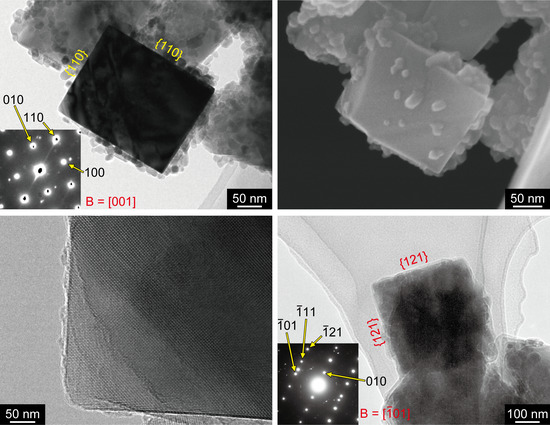
M. Kobayashi, H. Kato, T Miyazaki, M. Kakihana, Ceramics, 2(1), 56–63 (2019). selected as a cover DOI: 10.3390/ceramics2010005
Abstract
The functional properties of materials depend strongly on their morphologies. Here, the hydrothermal synthesis of rutile-type titania crystals with pseudocubic shapes using a water-soluble titanium complex is reported. This approach does not require extra additives or doping. Transmission electron microscopy and selected-area electron diffraction analysis revealed that they exposed high-index facets, such as {121}, and high-energy facets, such as {001}, which do not usually appear in rutile crystal. In terms of the formation of steps and kinks on pseudocubic rutile and coexisting anatase and brookite nanoparticles, the adsorption of nanoparticles might inhibit crystal growth, resulting in the formation of crystals with uncommon shapes exposing high-index and high-energy facets.
